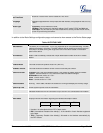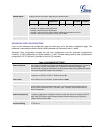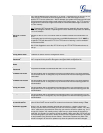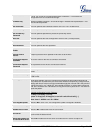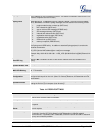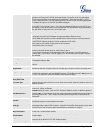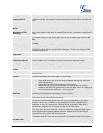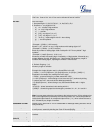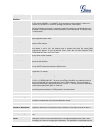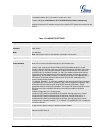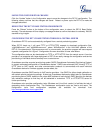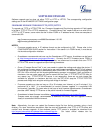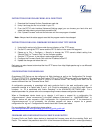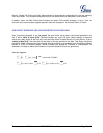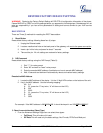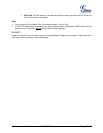
Firmware version 1.0.0.23 DP715/DP710 User Manual Page 45 of 52
for On-Hold Call
Anonymous Call
Rejection
Default is “No”. If set to “Yes”, anonymous call will be rejected.
Session Expiration
The SIP Session Timer extension enables SIP sessions to be periodically “refreshed” via
a SIP request (UPDATE, or re-INVITE. Once the session interval expires, if there is no
refresh via a UPDATE or re-INVITE message, the session is terminated.
Session Expiration is the time (in seconds) at which the session is considered timed out,
provided no successful session refresh transaction occurs beforehand. The default value
is 180 seconds.
Min-SE
Defines the minimum session expiration (in seconds). Default is 90 seconds.
Caller Request Timer
If set to “Yes”, the phone will use session timer when it makes outbound calls if remote
party supports session timer.
Callee Request Timer
If selecting “Yes”, the phone will use session timer when it receives inbound calls with
session timer request.
Force Timer
If set to “Yes”, the phone will use session timer even if the remote party does not support
this feature. If set to “No”, the session timer is enabled only when the remote party
supports this feature. To turn off Session Timer, select “No” for Caller Request Timer,
Callee Request Timer, and Force Timer.
UAC Specify Refresher
As a Caller, select UAC to use the phone as the refresher, or UAS to use the Callee or
proxy server as the refresher.
UAS Specify Refresher
As a Callee, select UAC to use caller or proxy server as the refresher, or UAS to use the
phone as the refresher.
Force INVITE
Session Timer can be refreshed using INVITE method or UPDATE method. Select “Yes”
to use INVITE method to refresh the session timer.
Enable 100rel
PRACK (Provisional Acknowledgment) method enables reliability to SIP provisional
responses (1xx series).
Codec Configuration
Preferred Vocoder
The DP715 supports up to 6 different Vocoder types including G.711 A-/U-law, G.726-32 ,
G.723.1, G.729A/B and iLBC. The user can configure Vocoders in a preference list that
will be included with the same preference order in SDP message. The first Vocoder is
entered by choosing the appropriate option in “Choice 1”. The last Vocoder is entered by
choosing the appropriate option in “Choice 6”.
VAD
Default is No. VAD allows detecting the absence of audio and conserves bandwidth by
preventing the transmission of “silent packets” over the network.
Jitter Buffer Type
Select either Fixed or Adaptive based on network conditions.
Jitter Buffer Length
Select Low, Medium, or High based on network conditions.
SRTP Mode
Secure RTP protocol used for media transmission over VoIP. Disabled by default. Other
modes are: enabled but not forced & enabled and forced.
G723 Rate
This defines the encoding rate for G723 vocoder. Default setting is 6.3kbps.
Use First Matching
Vocoder in 200OK SDP
Default is No. If set to “Yes”, device will include only the first match vocoder in its 200OK
response, otherwise it will include all match vocoders in same order received in INVITE.
iLBC Frame Size
This sets the iLBC size in 20ms or 30ms
iLBC Payload Type
Defines payload type for iLBC. Default value is 97. The valid range is between 96 and
127.
Voice Frames per
Packet
This field contains the number of voice frames to be transmitted in a single packet. When
setting this value, the user should be aware of the requested packet time (used in SDP
message) as a result of configuring this parameter. This parameter is associated with the



